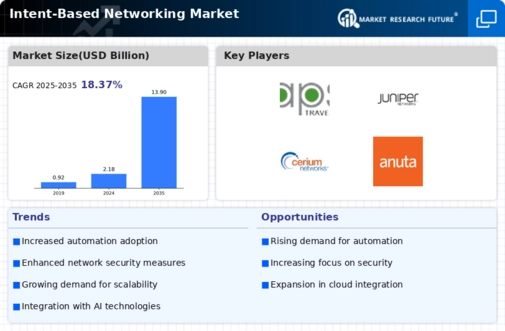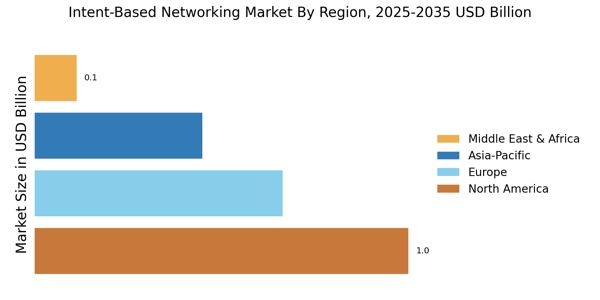Leading market players are investing heavily in research and development to expand their product lines, which will help the Intent-Based Networking market, grow even more. Market participants are also undertaking several strategic activities to expand their global footprint, with important market developments including new product launches, contractual agreements, mergers and acquisitions, higher investments, and collaboration with other organizations. To expand and survive in a more competitive and rising market climate, the Intent-Based Networking industry must offer cost-effective items.
Manufacturing locally to minimize operational costs is one of the key business tactics manufacturers use in the global Intent-Based Networking industry to benefit clients and increase the market sector. In recent years, the Intent-Based Networking industry has offered some of the most significant advantages to medicine. Major players in the Intent-Based Networking market, including Cisco Systems Inc. (US), Apstra Inc. (US), Veriflow Systems (US), Huawei Technologies Co.
Ltd. (China), Juniper Networks Inc. (US), Cerium Networks (US), Pluribus Networks (US), Forward Networks Inc. (US), Anuta Networks (US), Indeni Ltd. (US), and others, are attempting to increase market demand by investing in research and development operations.
Cisco Systems, Inc., known as Cisco, is an American global digital communication technology conglomerate firm with its corporate headquarters in San Jose, California. Cisco creates, produces, and markets networking tools, computer software, telecommunications gear, and other high-tech services and goods. Cisco is a leading provider of cutting-edge technologies such as Webex, OpenDNS, Jabber, Duo Security, and Jasper. It specializes in niche technological areas like the Internet of Things (IoT), domain security, videoconferencing, and energy management.
For instance: In March 2023, Cisco Systems Inc. unveiled cloud services in the IoT operations dashboard to grow business asset visibility, firmly manage assets from anywhere and deliver intent-based networking and industrial Internet of Things (IoT) customers with a unified path to automation for operational technology (OT) teams.
NetBrain, founded in 2004, offers operators and engineers a platform for network automation and visibility, making managing hybrid networks easier. The US Company NetBrain has headquartered in Massachusetts (US). Its top-down methodology sets and upholds corporate ambitions while converting each network component into a digital twin that comprehends component intentions. By regulating desired outcomes, engineers and operators can ensure network integrity. NetBrain is used by over 2,500 large businesses and managed service providers to streamline management processes, cut MTTRs, guarantee compliance, and comprehend network support for operational needs.
For Instance: In March 2023, NetBrain Technologies unveiled the Problem Diagnosis Automation System (PDAS) powered by Network Intent technology that NetBrain Technology Inc. has patented. With the help of the new PDA System, operations can define network intent without writing a single line of code. The PDA System responds to service incidents by connecting ITSM systems with it, decreasing total MTTR and eliminating tedious diagnostic work.

















Leave a Comment